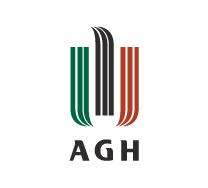|
Preliminary assessment of the possibility of mercury removal from hard coal with the use of air concentrating tables
Authors Dziok Tadeusz Strugała Andrzej Journal Gospodarka Surowcami Mineralnymi Year Vol. Number Pages 2017 33 4 125-142 Impact Factor 0.632 DOI Abstract in the main language of the article Mercury is characterized by highly toxic properties. The natural biogeochemical cycle of mercury occurs in the environment, which results in the fact that even a small amount of mercury emitted to the environment is a potential threat to human health. The process of coal combustion is one of the main sources of anthropogenic mercury emissions. For this reason, on 31 July 2017 the European Commission has adopted the mercury emission standards for large combustion plants.
The issue of mercury emissions is particularly important for Poland. Forecasts concerning energy consumption in Poland show that coal will be the main source for energy production in the coming decades. Therefore, actions enabling the reduction of mercury emissions from coal-fired power plants will have to be implemented. The mercury emissions from coal-fired power plants may be reduced through the application of a number of methods. These methods can be divided into two main groups: the post-combustion methods which allow for mercury removal from flue gases, and the pre-combustion methods which allow for mercury removal from coal before its combustion.
The effectiveness of mercury removal from coal is determined by the mode of its occurrence in coal. In the case of mercury occurrence in the adventitious inorganic constituents of coal, high effectiveness will be obtained in the coal cleaning processes. In the case of mercury occurrence in the organic matter as well as in the inherent inorganic constituents of coal, the effectiveness of this method will be low. Mercury could be removed from such coals through the process of thermal pretreatment at the temperature of 200-400°C (mild pyrolysis).
In the paper, the possibility of mercury removal from hard coal through the process of dry deshaling on an air concentrating table was examined. Six raw coals (coal feed), clean coals and the rejects derived from their dry deshaling were analyzed. The mercury content was measured in the examined samples. The content of mercury in raw coals and clean coals were compared. Additionally, the effectiveness of mercury removal from coal with rejects was determined.
For the analyzed coals, the effectiveness of mercury removal from coal in the process of dry deshaling on an air concentrating table ranged from 9 to 96%. This effectiveness is similar to the effectiveness of mercury removal from coal in the processes of coal washing. It should be mentioned that, when compared to the coal washing processes, the dry deshaling process is characterized by lower investment and operating costs. Therefore, the dry deshaling process on an air concentrating table should be considered as a competitive method for the coal washing processes.
There is also a possibility of an increase in the mercury removal efficiency from coal in the process of dry deshaling as a result of the thermal pretreatment of clean coal derived from dry deshaling. This solution is only recommended for coals in which mercury occurs in the organic
matter as well as in the inorganic constituents characterized by a relatively low temperature of mercury release.
It should be emphasized that the dry deshaling process allowed for a decrease of mercury content is not suitable for every coal. Although for five of the analyzed coals the mercury content in clean coal was lower in the range from 11 to 53%, for one coal the mercury content was higher by 19%. The effect of decreasing the mercury content in coal is more evident when it is related to the amount of energy contained in coal (i.e. for example to the lower heating value). For five of the analyzed coals mercury content expressed in such a way decreased in the range from 11 to 53 %, and for one coal the mercury content was, however, higher. Nevertheless, the difference was not very significant (ca. 5%). Keywords in the main language hard coal dry deshaling mercury removal Title in the additional language Abstract in the additional language Keywords in the additional language węgiel kamienny usuwanie rtęci | 

